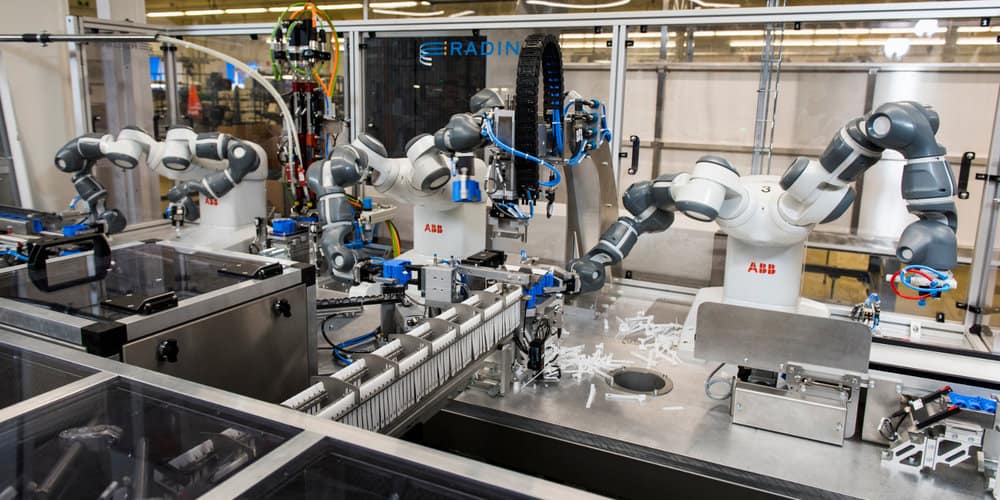
A robotic expert predicts it will be decades before robots can fully operate within complex environments
Autonomous trucks, it turns out, may not be coming for the truck driver’s job after all. While many are predicting the demise of the worker due to automation, a leading expert on robots says that it will be many years before robots achieve the machine learning capabilities to operate amongst humans.
That is surely good news for those who are worried that truck drivers are soon to be replaced by autonomous trucks. A recent report from the International Transport Forum claimed that 70% of truck driving jobs could be eliminated by 2030 because of self-driving trucks.
While not specifically speaking to the transportation industry, Sami Atiya, president of the Robotics and Motion division of ABB Group, told an audience at the recent TechCrunch Sessions: Robotics forum, held last week at MIT’s Kresge Auditorium, that reports are not about replace human workers anytime soon.
ABB is one of just a few industrial robotic manufacturers in the U.S.
“When you talk about machine learning and [artificial intelligence], what the robot still can’t do today is work in unpredicted or unforeseen environments,” Atiya said. “So, if the environment is too fuzzy or too unknown in their model, it is very difficult for them to work; this is an area where robots will evolve over time. Where we see machine learning working is when you narrow down the field and then you can introduce machine learning and networks and all the good stuff. But if you make it too broad, it’s very highly complex for a robot today in an environment where you have people walking around, robots and many other things. It will take decades before we come close to having a robot doing that on their own.”
Given the unpredictability of the nation’s highways, Atiya’s comment can easily be interpreted that a truly autonomous truck may still be decades away.
Despite how close it seems autonomous trucks may be, a recent revelation from Volvo showed just how far driverless driving may actually be. Volvo acknowledged that during testing, its autonomous technology was having trouble detecting kangaroos.
“If you make it too broad, it’s very highly complex for a robot today in an environment where you have people walking around, robots and many other things. It will take decades before we come close to having a robot doing that on their own.”
“When it’s in the air, it actually looks like it’s further away, then it lands and it looks closer,” David Pickett, Volvo’s Australian technical manager, told the ABC.
Volvo is working to correct the problem, but it shows the learning curves that must still be overcome with the technology and illustrates the point Atiya was making about complex environments.
Atiya, though, made two other points about robotics.
“I think we are entering the golden age of robotics,” he said. “Even having been in this industry now 20, 25 years now, if you think it is going fast, fasten your seatbelts because it is going to go even faster.”
The other point, Atiya emphasized, was that robots are not coming to take away jobs, and that is good news for truck drivers and warehouse workers – where automation has been increasing.
“Our opinion is it won’t take jobs away,” he said. “If you just look at pure data and statistics, in the countries that have the highest rate of robots per employee, which is Japan and Germany – and they have about 300 robots per 10,000 employees – they have the [lowest] unemployment [in the manufacturing sector]. And if you look over the last five years, [there have been] produced more than 100,000 robots in the manufacturing area and in that same manufacturing area, we’ve added 270,000 jobs, so basically that’s two jobs per one robot.
“In all these transitions over the last hundreds of years, take the steam engine … there were always people saying this will kill jobs and then it turned out it was a positive,” Atiya added. “Obviously we have concerns and fears about new technology but ultimately, we humans, I’m very convinced, will find ways to cope with them and use them as tools as opposed to substituting our own work.”
Atiya, whose expertise is in industrial robotics, says one of the big trends in robotics is the development of “collaborative” robots, which feature two arms. At the event, the company displayed its YuMi robot. That is allowing the development of manufacturing robots that can leave the cages they have been relegated to and work side-by-side with humans.
So while robots may not be driving trucks in 2018, it may not be long before they are helping pack the pallets and load the trailers.
